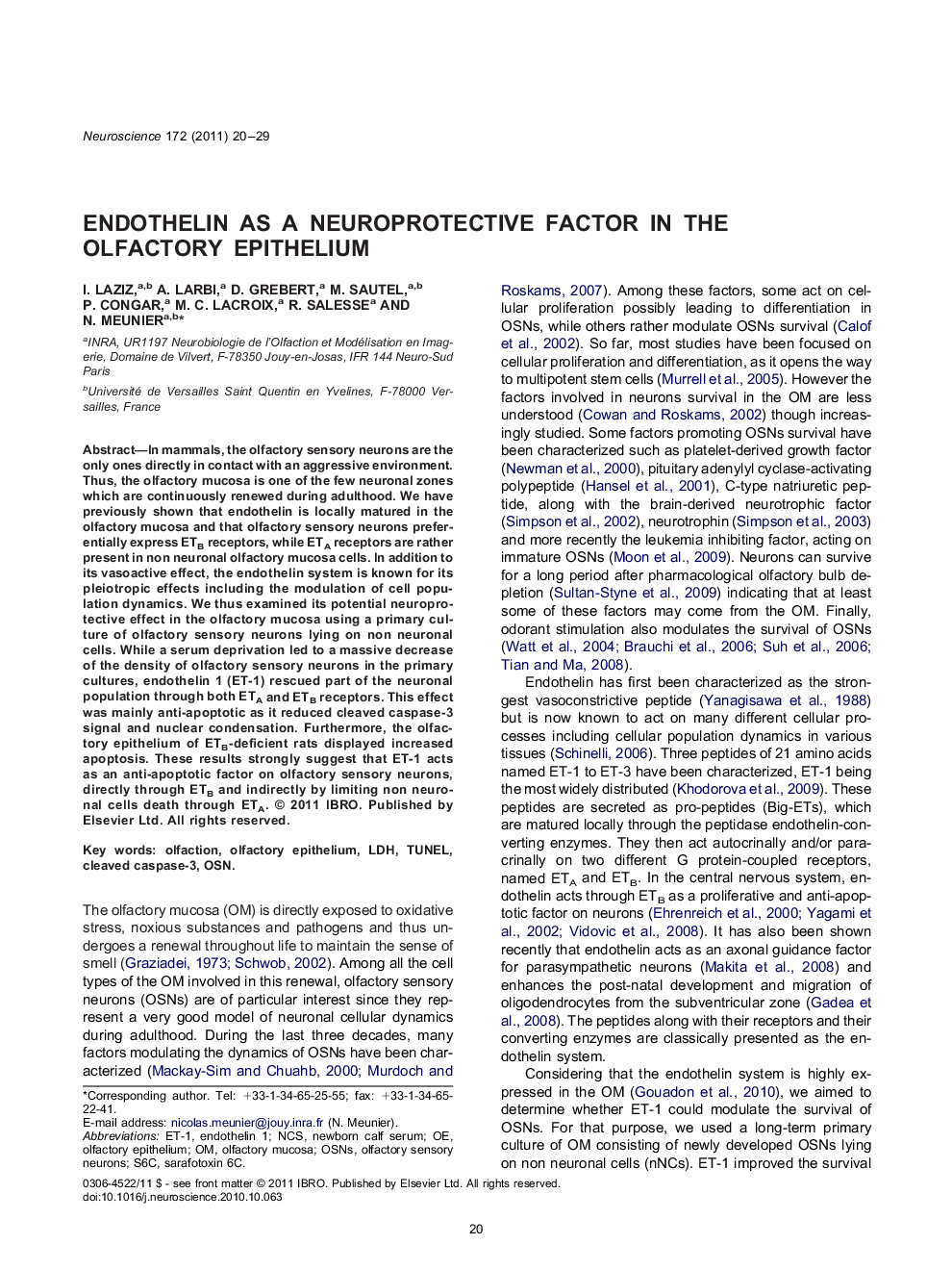| Article ID | Journal | Published Year | Pages | File Type |
|---|---|---|---|---|
| 4339023 | Neuroscience | 2011 | 10 Pages |
In mammals, the olfactory sensory neurons are the only ones directly in contact with an aggressive environment. Thus, the olfactory mucosa is one of the few neuronal zones which are continuously renewed during adulthood. We have previously shown that endothelin is locally matured in the olfactory mucosa and that olfactory sensory neurons preferentially express ETB receptors, while ETA receptors are rather present in non neuronal olfactory mucosa cells. In addition to its vasoactive effect, the endothelin system is known for its pleiotropic effects including the modulation of cell population dynamics. We thus examined its potential neuroprotective effect in the olfactory mucosa using a primary culture of olfactory sensory neurons lying on non neuronal cells. While a serum deprivation led to a massive decrease of the density of olfactory sensory neurons in the primary cultures, endothelin 1 (ET-1) rescued part of the neuronal population through both ETA and ETB receptors. This effect was mainly anti-apoptotic as it reduced cleaved caspase-3 signal and nuclear condensation. Furthermore, the olfactory epithelium of ETB-deficient rats displayed increased apoptosis. These results strongly suggest that ET-1 acts as an anti-apoptotic factor on olfactory sensory neurons, directly through ETB and indirectly by limiting non neuronal cells death through ETA.
Graphical AbstractFigure optionsDownload full-size imageDownload high-quality image (468 K)Download as PowerPoint slideResearch Highlights▶Endothelin acts as an antiapoptotic factor in the olfactory mucosa in vitro and in vivo. ▶Endothelin limits mature olfactory sensitive neurons death through ETBin vitro and in vivo. ▶Endothelin limits non neuronal cell death through ETA in a primary culture of the olfactory mucosa.
